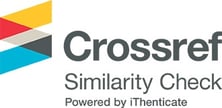Overconfidence CEO dan Nilai Perusahaan: Peran Mediasi Struktur Modal dan Investasi
DOI:
10.33395/owner.v9i4.2785Keywords:
Capital Structure; CEO Overconfidence; Firm Value; Investment Policy; Psychological BiasAbstract
This study evaluates the impact of CEO overconfidence on company value, with the mediating role of capital structure and investment policy. The background of this study is highly relevant given the increasing attention to psychological aspects in financial decision-making in emerging markets, such as Indonesia, where leadership dynamics play an important role in business strategy and company value fluctuations. CEO overconfidence can encourage bold decision-making, which has the potential to increase company value. However, this behavior can also pose significant risks if not managed properly. The study uses a quantitative approach with Partial Least Squares Structural Equation Modeling (PLS-SEM) techniques to analyze 450 observations from 90 companies in the raw materials, consumer goods, energy, infrastructure, and manufacturing sectors listed on the Indonesia Stock Exchange (IDX) from 2020 to 2024. The CEO overconfidence index was measured through a combination of demographic indicators such as share ownership, age, tenure, and education level. The analysis results show that CEO overconfidence has a significant effect on capital structure and investment policy, as well as a direct impact on company value. Of the two mediating variables, only investment policy (ROI) significantly mediates this relationship, while capital structure (DER) does not. These findings support behavioral finance theory and signaling theory, which affirm that cognitive biases play a real role in managerial financial decisions. Practically, this study provides important insights for investors to evaluate the impact of psychological biases on company performance and for boards of directors to formulate incentive policies that can manage CEO behavioral risks, thereby making strategic decision-making more optimal and transparent.
Downloads
Plum-X Analityc
References
REFERENSI
Andrew Smithers & Stephen Wright. (2002). Valuing Wall Street: Protecting Wealth in Turbulent Markets. McGraw-Hill Professional.
Burkhard, B., Sirén, C., van Essen, M., Grichnik, D., & Shepherd, D. A. (2023a). Nothing Ventured, Nothing Gained: A Meta-Analysis of CEO Overconfidence, Strategic Risk Taking, and Performance. Journal of Management, 49(8), 2629–2666. https://doi.org/10.1177/01492063221110203
Burkhard, B., Sirén, C., van Essen, M., Grichnik, D., & Shepherd, D. A. (2023b). Nothing Ventured, Nothing Gained: A Meta-Analysis of CEO Overconfidence, Strategic Risk Taking, and Performance. Journal of Management, 49(8), 2629–2666. https://doi.org/10.1177/01492063221110203
Dang, T. D., & Do, T. V. T. (2021). Does capital structure affect firm value in Vietnam? Investment Management and Financial Innovations, 18(1), 33–41. https://doi.org/10.21511/imfi.18(1).2021.03
Eugene F. Brigham; Joel F. Houston. (2021). Fundamentals of Financial Management (16th ed.). Cengage Learning.
Fionita, I., Kufepaksi, M., & Hasnawati, S. (2021). CEO overconfidence, investment decisions and firm value in Indonesia. Economic Annals-XXI, 194(11–12), 49–58. https://doi.org/10.21003/ea.V194-06
Kumar, J., & Prince, N. (2022). Overconfidence bias in the Indian stock market in diverse market situations?: an empirical study. International Journal of System Assurance Engineering and Management, 13(6), 3031–3047. https://doi.org/10.1007/s13198-022-01792-1
Malmendier, U., & Tate, G. (2005). CEO overconfidence and corporate investment. Journal of Finance, 60(6), 2661–2700. https://doi.org/10.1111/j.1540-6261.2005.00813.x
Maryam, S., Gemina, D., Samsuri, Asmi, E. A., & Gunawan, R. (2024). Debt to Equity Ratio, Current Ratio, and Return on Investment on Stock Prices in Conventional Commecrcial Bank Listed on the Indonesian Stock Exchange. Indonesian Interdisciplinary Journal of Sharia Economics, 7(1), 481–500.
Moore, D. A., & Healy, P. J. (2008). The Trouble With Overconfidence. 115(2), 502–517. https://doi.org/10.1037/0033-295X.115.2.502
Mundi, H. S., & Kaur, P. (2022). CEO Overconfidence and Capital Structure Decisions: Evidence from India. Vikalpa, 47(1), 19–37. https://doi.org/10.1177/02560909221079270
Suriani, S. (2022). Financial Behavior.
Suseno, G., Putri, E. A., Sari, N., & Meilita, W. (2024). Tobin’s Q as a Mediating Variable in the Relationship between Financial Ratios and Stock Prices: An Analysis. E-Jurnal Akuntansi, 34(5), 1078–1092. https://doi.org/10.24843/eja.2024.v34.i05.p01
Uzliawati, L., Yuliana, A., Januarsi, Y., & Santoso, M. I. (2018). Optimisation of capital structure and firm value. European Research Studies Journal, 21(2), 705–713. https://doi.org/10.35808/ersj/1034
William R. Scott. (2015). Financial Accounting Theory. Pearson Education.
Zhang, X., Liao, Y., Zhang, D., Liu, W., Wang, Z., Jin, Y., Chen, S., & Wei, J. (2025). Explainable machine learning models for identifying mild cognitive impairment in older patients with chronic pain. BMC Nursing, 24(1). https://doi.org/10.1186/s12912-025-02723-8
Downloads
Published
How to Cite
Issue
Section
License
Copyright (c) 2025 Akhmad Yani, Riris Rotua Sitorus

This work is licensed under a Creative Commons Attribution-NonCommercial 4.0 International License.
















